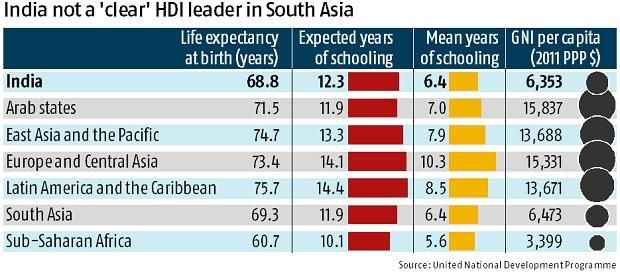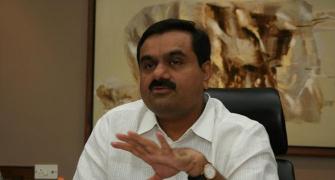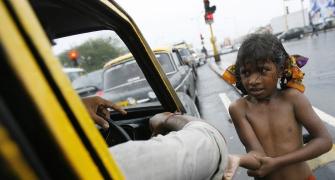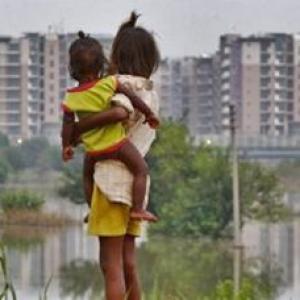Among its closest neighbours, India leads in income levels or overall economic empowerment. However, it also leads in terms of income inequality, due to which the inequality-adjusted HDI suffers a bigger fall.

India has been ranked 130 among 189 nations in the United Nations Development Programme's human development indices for the year 2017.
While the country was placed at the 131st spot in 2016, the report explicitly states that "it is misleading to compare values and rankings with those of previously published reports".
According to the data, which is based on consistent methodology that shows real changes in values and ranks over time, India's rank actually moved one place from 129/188 to 130/189.
India's HDI went up from 0.636 in 2016 to 0.64 in 2017, but grew at a slower pace, at 0.63 per cent, compared with 1.4 per cent in each of the preceding two years. This is in line with the slow HDI growth at the global level, from above 0.5 per cent in preceding two years to 0.3 per cent in 2017. (See chart 1)

In comparison, however, HDI growth in Europe and Central Asia-the region with the greatest number of developed countries-has improved in the last year to 0.5 per cent, from 0.36 per cent in 2016.
The reason for slow HDI growth in India can be ascribed to the stagnation in the primary indicators on which the HDI is based. (See chart 2)

The expected years of schooling in 2017 stood at 12.3 years, unchanged from the 2016 level. The same holds true for mean years of schooling, which remained unchanged at 6.4 years.
Such a situation demands an improvement in the age-specific enrolment rates in schools, suggest the report. According to the latest data, school enrolment has dropped from 94 per cent at the elementary level (Class 8) to 80 per cent at secondary level (Class 10) and 55 per cent at higher secondary level (Class 10+2).
Further, the growth in national income per person in the country slowed down from 5.9 per cent in 2016 to 2.6 per cent in 2017. India's economy grew slower over the last two years, from 8.2 per cent in 2015-16, to 7.1 per cent in 2016-17, to 6.7 per cent in 2017-18, according to revised estimates.
However, the overall growth masks the inequalities among the populace. Factoring in the inequality, India's HDI on this account fell from 0.64 to 0.47, showing an “inequality loss” of 26.8 per cent, worse than neighbours and regional average.
The average loss due to inequality for medium HDI countries was 25.1 per cent and for South Asia it was 26.1 per cent. (See chart 3)
Despite being the fastest growing developing economy, India's HDI at 0.64 was still lower than the overall HDI of developing economies group at 0.68, suggesting that human development follows economic development with a lag.
Among its closest neighbours, India leads in income levels or overall economic empowerment. However, it also leads in terms of income inequality, due to which the inequality-adjusted HDI suffers a bigger fall.










